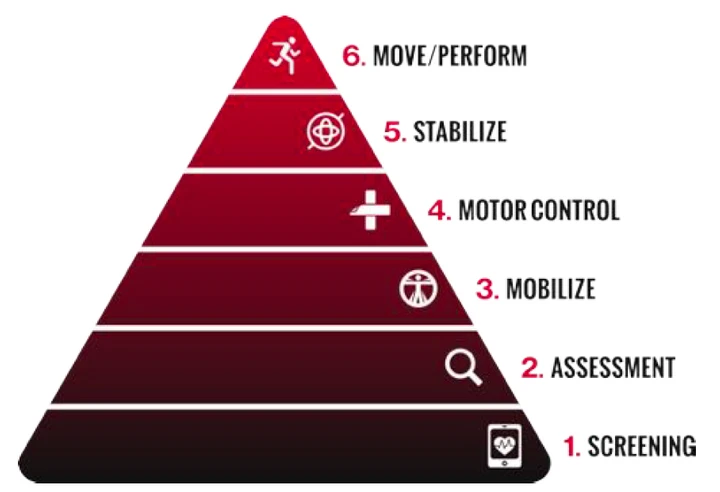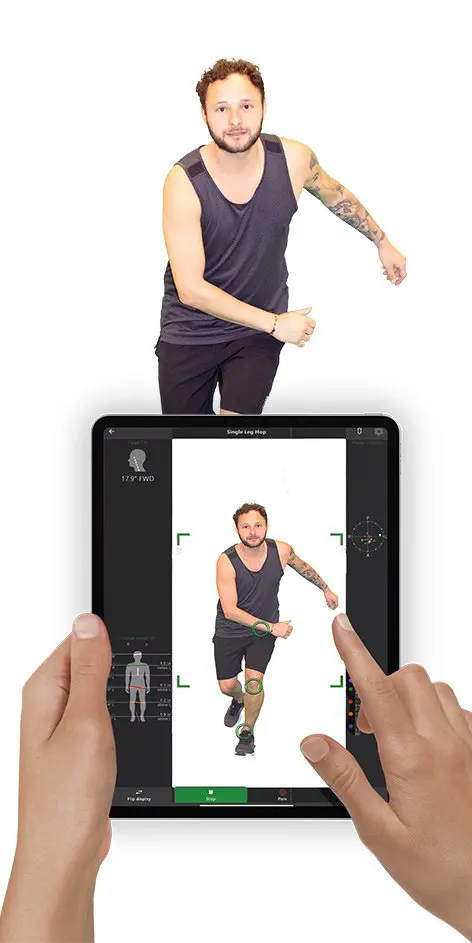
“Data is a tool for enhancing intuition”
– Hilary Mason
There is a good reason we established to foundation of the Functional Movement Training (FMT) Movement Pyramid with Screening and Assessment. We consider these aspects of the clinical and performance experience critical for optimal outcomes. The data we acquire from our patients and clients should arm the decisions made with respect to treatment and training programs.
Kinetisense software has emerged as a game-changer in the realm of efficient but effective motion capture. As the world’s first patented marker-less motion capture analysis system, Kinetisense allows you to engage with your patients/clients and provide them real-time biofeedback (data) for how they truly move. Leveraging the power of depth-sensing cameras and sophisticated algorithms, Kinetisense allows for the real-time tracking and analysis of human movement without the need for markers. Here are some key features that make Kinetisense stand out:
- Depth-Sensing Cameras: Kinetisense is portable with the newer iPad Pro, which capture depth information and generate a detailed 3D skeleton model of the subject. This new software can track movement in real-time, providing precise data without the need for markers. Gain the data you need to analyze range of motion, movement, balance, risk of falling, dynamic hop tests, posture and more, with the click of a button.
-
- Real-Time Analysis: Kinetisense software processes the captured data in real-time, enabling immediate feedback and analysis. This feature is particularly valuable in applications such as sports training, physical therapy, chiropractic, workplace safety, and rehabilitation, where instant feedback can enhance performance and aid in injury prevention.
-
Range of Motion Analysis: With Kinetisense, measuring joint angles and range of motion becomes seamless. By tracking skeletal movements, the software can precisely quantify joint flexion, extension, abduction, and other important metrics. This information is invaluable for assessing movement patterns, identifying limitations, and developing targeted intervention strategies.

Functional Planar Mapping
- Posture Assessment: Kinetisense software includes posture analysis capabilities, allowing for the evaluation of body alignment and posture-related issues. Whether for ergonomics assessment, injury prevention, or athletic performance optimization, this feature provides valuable insights into body mechanics and helps identify potential risks or imbalances.
- Movement Screenings: Kinetisense offers pre-built movement screenings and assessments, tailored for various applications such as sports, fitness, workplace, and healthcare. These screenings can identify movement deficiencies, muscular imbalances, and asymmetries, enabling professionals to design effective training or treatment programs.
Clinical Advantages of Kinetisense Motion Capture
- Improved Accuracy: Kinetisense leverages advanced algorithms to track skeletal movements accurately. This level of precision ensures reliable and trustworthy data for professionals in fields such as biomechanics, physical therapy, and sports performance.
- Enhanced Flexibility and Freedom of Movement: Unlike marker-based systems, Kinetisense allows subjects to move freely without any constraints. This unrestricted environment facilitates natural movement patterns, making it particularly useful for sports analysis, dance, and rehabilitation settings.
- Cost-Effectiveness: Traditional marker-based motion capture systems can be costly, requiring specialized hardware and numerous markers. In contrast, Kinetisense utilizes off-the-shelf depth-sensing cameras, making it a more cost-effective solution without compromising accuracy or performance.
- Objective Screen/Intervene/Re-Screen Tool: Kinetisense streamlines and augments the use of the data captured about a patient/client’s movement. By quickly and effectively gathering information about movement, the therapist can be assured that prescribed procedures (manual therapies, corrective exercises, taping applications) were effective in managing the issue with validated objective data. Within our FMT Education we demonstrate how to integrate the use of different technologies, including Kinetisense to support our intuition and fuel our decisions in the clinical and performance arena.


